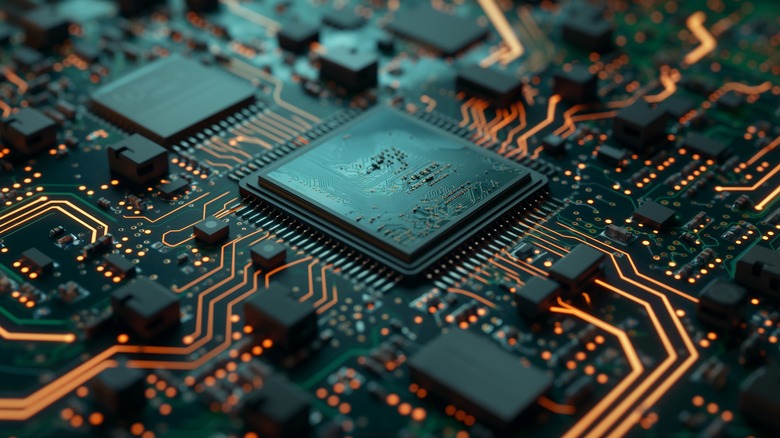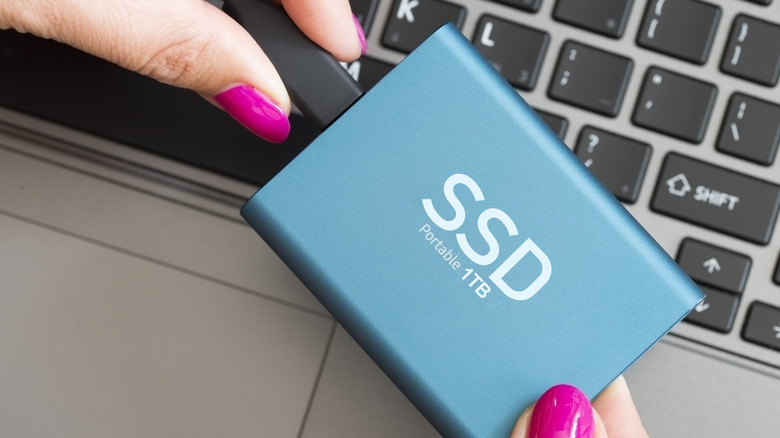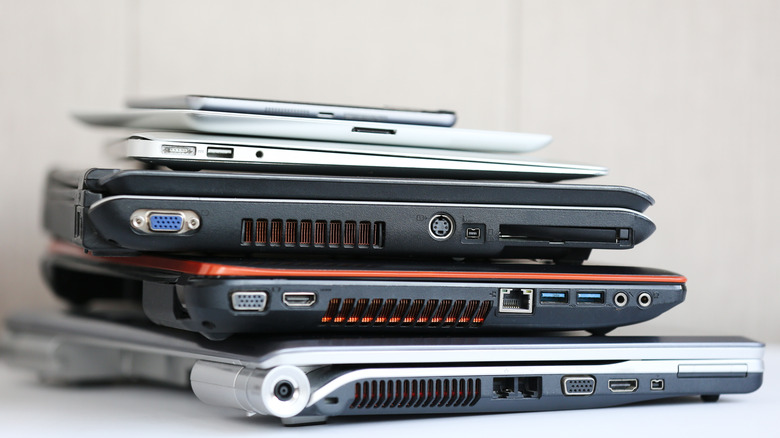Is A Cheap Laptop Worth The Money? 5 Reasons To Reconsider
Laptops can be expensive, and many people have a hard time justifying putting thousands of dollars down for the latest and greatest technology from the biggest major laptop brands. It's easy to see why a budget-conscious consumer might be tempted to choose one of the many cheaper options that are available. You don't necessarily need to pay two months' rent for a decent machine, but it's worth noting that there are serious drawbacks to buying a cheap laptop as well.
I've been building computers for years. I've also written several buyer's guides and professional laptop reviews, so I'm familiar with the ins and outs of what makes a quality laptop. Of course, different users will have different needs. Gamers, video editors, and graphic designers will need to spend significantly more on a computer with a powerful GPU and a quality screen than college students who simply need a budget laptop with a word processor and an internet browser. But even casual users might want to avoid the cheapest options as poor performance, limiting hardware, short longevity, and limited repair options may end up being more of a hassle than the money you saved is worth.
Poor performance can be frustrating
Computer performance can be difficult to understand. Slow boot speeds, unresponsive program interfaces, slow upload and download speeds, slow software launching speeds, and poor image rendering are just a few of the different performance-related symptoms you might encounter when using a cheaper laptop. In the worst cases, you may even have programs freeze or crash while you're trying to use them because the hardware in your laptop simply can't keep up with the processing demands that you are asking it to perform.
One of the worst offenders that you often see in cheaper laptops is the boot drive. This is the hard drive that houses your computer's operating system. Most cheaper laptops only house a single hard drive, meaning that your boot drive and storage drive are the same thing. The read speed of this drive determines how quickly your computer will start up and launch programs. Cheap laptops often cut corners by using slower drives, which can make the entire computer feel sluggish. A good rule of thumb is that solid-state drives (SSDs) and M.2 NVMe SSDs tend to be a lot faster than spinning drives (HDDs). Always aim to get a laptop with an SSD instead of an HDD, and avoid ones with product descriptions that don't tell you what kind of hard drive it's using.
Low-spec hardware limits applications
Low-end hardware doesn't just make performance worse on laptops. Applications have specific hardware requirements, and they simply won't work if you don't have adequate hardware to run them. This is most common in gaming, but you might also encounter hardware requirement issues with video editing applications, 3D modeling software, machine learning applications, and other high-demand programs. The three performance-focused spec requirements that you can typically expect to see cited are the CPU, memory, and GPU.
The CPU is often affectionately referred to as "the brain of the computer." This is because it's the component that is responsible for processing nearly all of your system's software. Even a low-end new CPU should have plenty of power for most casual applications, but cheap laptops often use older CPUs from previous generations of hardware. These can struggle to meet modern software requirements.
RAM has more to do with how much your laptop can process at any given time. A low RAM capacity (less than 8 GB) can be severely limiting. Not only will you struggle to run multiple applications simultaneously, but you may also have difficulty performing even a single complex task without encountering a bottleneck.
The GPU is responsible for generating the images that you see on your screen. It's often the most expensive component in a computer and one of the easiest to overlook in laptops. It's always a good idea to look up the graphics requirements of any program you plan to use on your laptop and make sure that it will be able to run them.
Low storage runs out quickly
I mentioned earlier that SSD storage is much faster than HDD storage. This is true, but you will frequently find cheaper laptops with smaller SSDs that offer significantly less storage than those that only have HDDs. Sometimes, you will find laptops with as little as 64 GB of storage. This is particularly problematic when you consider that this needs to house your operating system in addition to all of your software, files, and media. Windows 11 alone requires 64 GB of disk space, which is essentially the entirety of these smaller hard drives. Even the 128 GB drives you often see at lower price points won't leave you much space to work with.
This might not be much of a problem when you first get your laptop, but it can cause a lot of issues down the road. Expanding the storage in a laptop can be a much more complex procedure than in a desktop, and you might not be able to do it without voiding your laptop's warranty. It's definitely worth considering how much space you'll need and picking out a laptop that suits your needs. I would consider a 250 GB SSD to be a minimum starting point.
Poor image quality
One of the main differences between a laptop and a desktop is that you can't really take the screen off a laptop and replace it with a different one. The screen that comes attached to the laptop is the only one that you'll get, so you want to make sure that it's a good one. This might not be quite as big a deal as the internal hardware in terms of overall functionality, but it can be very important if you plan on using it for tasks like video editing, graphic design, and photo editing. Most cheaper laptops will come with a 1920x1080 resolution screen that measures somewhere between 12 and 17 inches. This is perfectly adequate for most users, but you'll want to keep a lookout for lower resolutions.
You also want to take a look at the laptop's brightness and color accuracy. Max brightness is usually measured in nits, with 200 nits considered the bare minimum for indoor use. You'll probably want at least 500 nits if you plan on using the laptop outside. You can always turn the brightness down to your comfort level, but cheaper laptops with a maximum brightness of 150 nits will appear dim even at their maximum brightness levels in low lighting.
Color is harder to gauge. There are several metrics for determining color accuracy, and they can sometimes be difficult to compare and understand. One thing you can do is take a look at user reviews to see if other buyers have been satisfied with the image quality.
Cheaper hardware may not be viable for as long
Another thing to consider when purchasing a cheaper laptop is longevity. Even if the specs are sufficient for your current needs, you might start to feel like your laptop is getting old sooner than expected. Programs that ran well when you first purchased your laptop will start to struggle more and more as time goes on. This isn't necessarily due to the degrading performance of the laptop so much as it is the higher demands that come with new software and higher-volume data streams.
'Future-proofing' is a frequently used term in the PC building community. It refers to the idea of building a computer from the latest and most powerful components to help ensure that it remains viable for as long as possible. Of course, no computer is really future-proof; all technology eventually becomes outdated. But there is an element of truth to this. Higher-spec computers will be able to handle more basic workloads for longer than lower-spec alternatives, meaning that you will have to upgrade less frequently to maintain the same performance threshold. It's difficult to definitively say if buying a mid-tier laptop will actually save you money in the long run as opposed to buying bottom-tier units more frequently. It's an equation that varies widely based on the specs-to-price ratio of the model, the landscape of digital technology, and your individual needs as a user.





